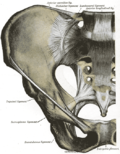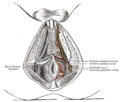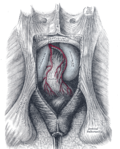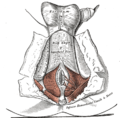| Urogenital triangle | |
|---|---|
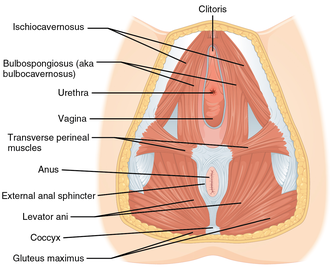 Muscles of the female perineum. (Urogenital triangle is roughly equal to top half of diagram.) | |
 Muscles of the male perineum. (Urogenital triangle is roughly equal to top half of diagram.) | |
| Details | |
| Identifiers | |
| Latin | regio urogenitalis |
| TA98 | A01.2.06.003 |
| TA2 | 279 |
| FMA | 20348 |
| Anatomical terminology | |
The urogenital triangle is the anterior part of the perineum. In female mammals, it contains the vulva, while in male mammals, it contains the penis and scrotum.
